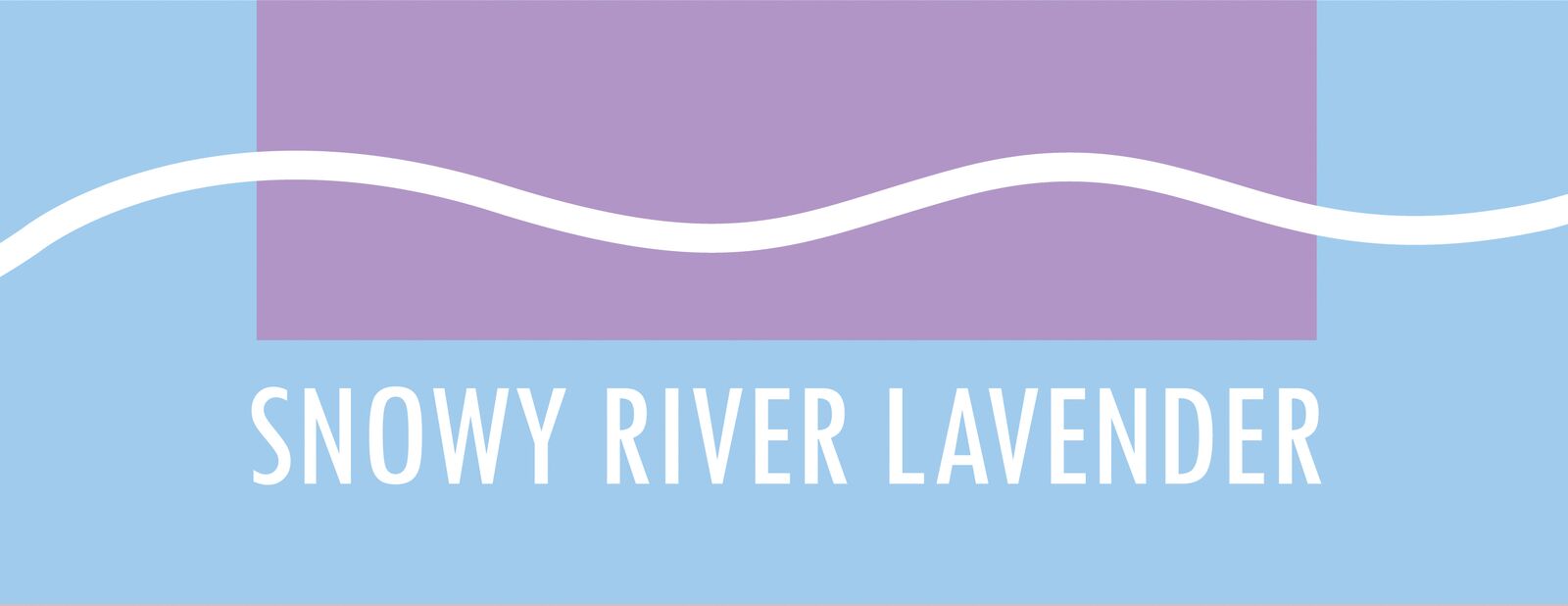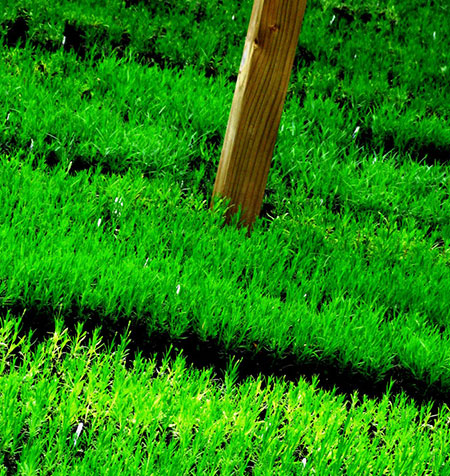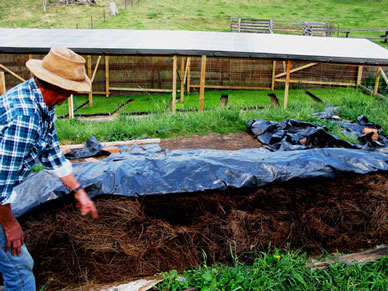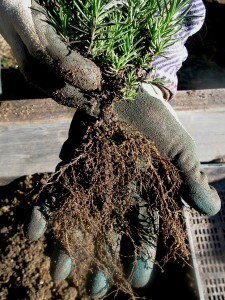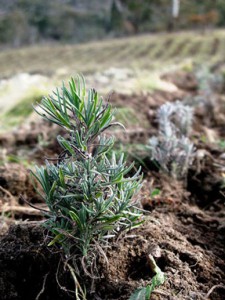THE NURSERY AT SNOWY RIVER LAVENDER
POPULATING THE FARM
The nursery is a key activity of the farm, as it is only through the propagation of large quantities of plants that Snowy River Lavender can significantly grow. Our first 20,000 plants, planted between 2001 and 2003, were out sourced mainly from Larkman Nurseries, Victoria. These foundation plants are still very productive and it is from them that we have produced the necessary quality and yield data for expanding our farm to a commercial scale. In 2005, the farm nursery was set up to enable farm expansion. With many lessons to learn about propagating plants in our unique conditions, 2010 was our break through year with the nursery now able to produce in excess of 60,000 farm ready plants per year. Importantly the nursery is also central in both our seed propagation and cultivar development programs and is the facility enabling us to diversify our essential oil production into other dry land herbs and cold climate Australian native plants.
A FARM NURSERY
Plants naturally feed through photosynthesis and by the root uptake of nutrients through soil humus, a colloidal substance developed by the micro and macro biology of the soil. Key to our nursery is the understanding that we are producing lavender plants for a farm system managed toward low inputs and self sustainability and that the successful transition of young lavenders into this minimally mediated farm ecology, of soil and sunlight, is paramount. This may sound obvious, however, the sheltered conditions of conventional nursery production does not necessarily cater for such farm hardy plants.
Central to our nursery processes is the understanding plants have at their deployment two different root types: larger structural roots, for moisture up take; and fine hair like network roots which operate to take up mineral nutrients from soil humus. Primary among the lessons learned in the development of our nursery is a propagation mix based on soil and worm compost. The biological agency of these inclusions, allow our plants to develop these fine soil ready feeder roots from their onset, giving them a head start for their farm life.
This focus on soil based root development differs from standard nursery propagation, where the potting mix is based on eliminating microbial potential by using a benign combination of sand, peat moss and perlite, with the plants nutritional needs met by the inclusion of soluble fertilizers as plant development requires. While this more benign mix is primarily designed to eliminate the potential of pathogens entering the nursery system it encourages root systems which are developed away from soil feeding and towards soluble nutrients, or salts, commonly known as artificial fertilisers which operate through the same root system as the plants moisture up. These moisture dependent feeding systems leave the plant more vulnerable to dry conditions and dependent on the constant input of artificially developed nutrients and irrigation.
We find that for our farm, where no irrigation or soluble artificial fertilisers are used, plants developed in our nursery are more resilient to the sometimes harsh dry conditions. We have not, to date, had any issues with pathogens (fungal or otherwise) in our nursery due to prudent watering practices. Lavender as a dry land herb should not be overwatered.
LAVENDER CULTIVAR PROPAGATION
Today farming cultivars, of both lavender and lavandin, dominate essential oil production worldwide. At Snowy River Lavender, a large percentage of farm production is also from cultivar stock and furthermore, we are proactively developing our planting stock with many new lavender cultivars being trialled. Propagating these plants has been the primary focus of our nursery. Cultivar propagation is a process whereby semi hard wood cuttings are taken from established plants in the autumn or early winter.
RECYCLING LAVENDER AND CYCLES OF FERTILITY
Compost and worm casts are central in the success of our propagation mix and therefore the nursery. In recent years composting at Snowy River Lavender has centred on recycling lavender straw the biomass left over after distillation. .
SEED PROPAGATION AND POPULATION LAVENDER
The spontaneous growth of seedlings among our established lavender and subsequent success of our ‘sponnee’ plantings in producing high quality essential oil, has encouraged us to increase our population lavender potential with a more dedicated seed propagation facility in the nursery.
FARM DIVERSIFICATION
The nursery is well under way with our farm expansion into other dry land aromatic herbs including rosemary, immortelle, and sage. We also have a nursery program for propagating Australian native plants for both aromatic purposes and for farm development projects such as hedging and land restoration.
